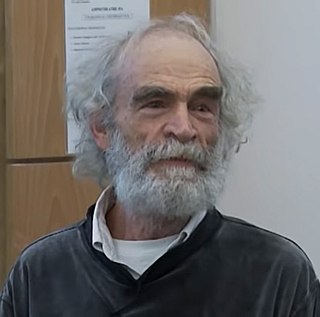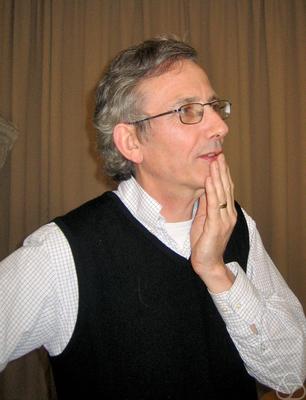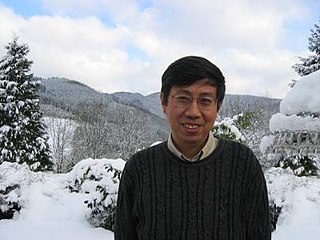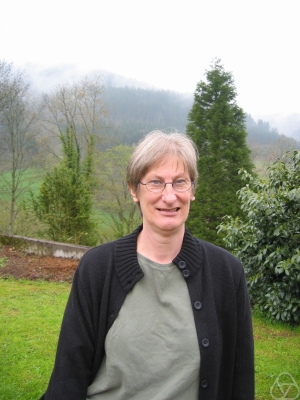
The Abel Prize is awarded annually by the King of Norway to one or more outstanding mathematicians. It is named after the Norwegian mathematician Niels Henrik Abel (1802–1829) and directly modeled after the Nobel Prizes. It comes with a monetary award of 7.5 million Norwegian kroner.

Shing-Tung Yau is a Chinese-American mathematician. He is the director of the Yau Mathematical Sciences Center at Tsinghua University and Professor Emeritus at Harvard University. Until 2022 he was the William Caspar Graustein Professor of Mathematics at Harvard, at which point he moved to Tsinghua.

Mikhael Leonidovich Gromov is a Russian-French mathematician known for his work in geometry, analysis and group theory. He is a permanent member of Institut des Hautes Études Scientifiques in France and a professor of mathematics at New York University.

Sir Simon Kirwan Donaldson is an English mathematician known for his work on the topology of smooth (differentiable) four-dimensional manifolds, Donaldson–Thomas theory, and his contributions to Kähler geometry. He is currently a permanent member of the Simons Center for Geometry and Physics at Stony Brook University in New York, and a Professor in Pure Mathematics at Imperial College London.

Richard Melvin Schoen is an American mathematician known for his work in differential geometry and geometric analysis. He is best known for the resolution of the Yamabe problem in 1984.

Geometric analysis is a mathematical discipline where tools from differential equations, especially elliptic partial differential equations (PDEs), are used to establish new results in differential geometry and differential topology. The use of linear elliptic PDEs dates at least as far back as Hodge theory. More recently, it refers largely to the use of nonlinear partial differential equations to study geometric and topological properties of spaces, such as submanifolds of Euclidean space, Riemannian manifolds, and symplectic manifolds. This approach dates back to the work by Tibor Radó and Jesse Douglas on minimal surfaces, John Forbes Nash Jr. on isometric embeddings of Riemannian manifolds into Euclidean space, work by Louis Nirenberg on the Minkowski problem and the Weyl problem, and work by Aleksandr Danilovich Aleksandrov and Aleksei Pogorelov on convex hypersurfaces. In the 1980s fundamental contributions by Karen Uhlenbeck, Clifford Taubes, Shing-Tung Yau, Richard Schoen, and Richard Hamilton launched a particularly exciting and productive era of geometric analysis that continues to this day. A celebrated achievement was the solution to the Poincaré conjecture by Grigori Perelman, completing a program initiated and largely carried out by Richard Hamilton.

Tian Gang is a Chinese mathematician. He is a professor of mathematics at Peking University and Higgins Professor Emeritus at Princeton University. He is known for contributions to the mathematical fields of Kähler geometry, Gromov-Witten theory, and geometric analysis.

Dennis Parnell Sullivan is an American mathematician known for his work in algebraic topology, geometric topology, and dynamical systems. He holds the Albert Einstein Chair at the City University of New York Graduate Center and is a distinguished professor at Stony Brook University.
The EDGE Foundation is an organization which helps women get advanced degrees in mathematics.

Chuu-Lian Terng is a Taiwanese-American mathematician. Her research areas are differential geometry and integrable systems, with particular interests in completely integrable Hamiltonian partial differential equations and their relations to differential geometry, the geometry and topology of submanifolds in symmetric spaces, and the geometry of isometric actions.

Mathematical Sciences Publishers is a nonprofit publishing company run by and for mathematicians. It publishes several journals and the book series Geometry & Topology Monographs. It is run from a central office in the Department of Mathematics at the University of California, Berkeley.

Karen Vogtmann (born July 13, 1949 in Pittsburg, California) is an American mathematician working primarily in the area of geometric group theory. She is known for having introduced, in a 1986 paper with Marc Culler, an object now known as the Culler–Vogtmann Outer space. The Outer space is a free group analog of the Teichmüller space of a Riemann surface and is particularly useful in the study of the group of outer automorphisms of the free group on n generators, Out(Fn). Vogtmann is a professor of mathematics at Cornell University and the University of Warwick.
Lesley Millman Sibner was an American mathematician and professor of mathematics at Polytechnic Institute of New York University. She earned her Bachelors at City College CUNY in Mathematics. She completed her doctorate at Courant Institute NYU in 1964 under the joint supervision of Lipman Bers and Cathleen Morawetz. Her thesis concerned partial differential equations of mixed-type.
In differential geometry, algebraic geometry, and gauge theory, the Kobayashi–Hitchin correspondence relates stable vector bundles over a complex manifold to Einstein–Hermitian vector bundles. The correspondence is named after Shoshichi Kobayashi and Nigel Hitchin, who independently conjectured in the 1980s that the moduli spaces of stable vector bundles and Einstein–Hermitian vector bundles over a complex manifold were essentially the same.
Daniel Stuart Freed is an American mathematician, specializing in global analysis and its applications to supersymmetry, string theory, and quantum field theory. He is currently the Shiing-Shen Chern Professor of Mathematics at Harvard University.
There is a long history of women in mathematics in the United States. All women mentioned here are American unless otherwise noted.
This is a timeline of women in mathematics.
This is a timeline of women in science in the United States.
Karen Melnick is a mathematician and associate professor at University of Maryland, College Park. She specializes in differential geometry and was most recently awarded the 2020-2021 Joan and Joseph Birman Fellowship for Women Scholars by the American Mathematical Society.












